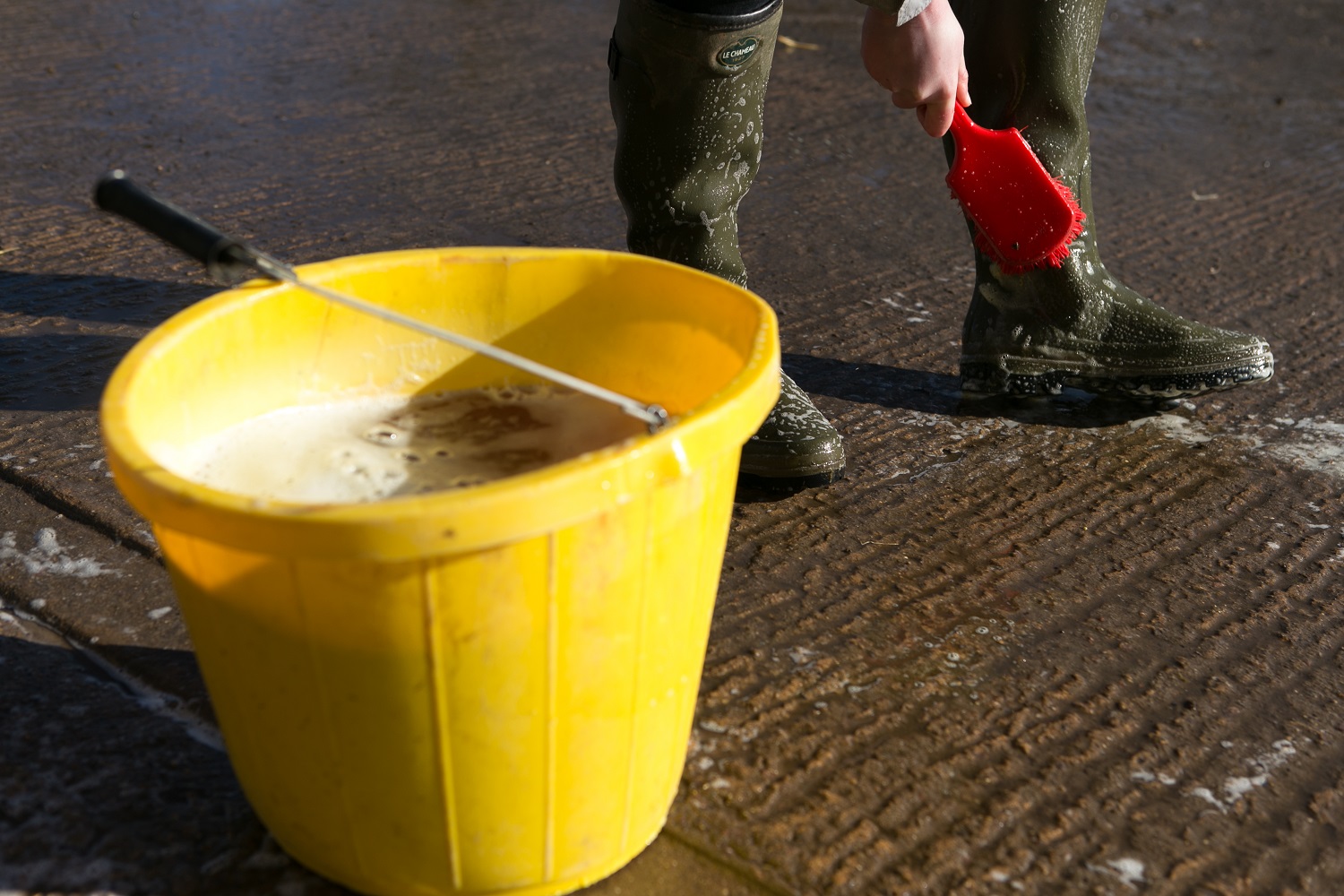Protecting herd health and productivity when buying cattle
Friday, 7 July 2023
Biosecurity has become an essential aspect of farming and is critical to prevent the introduction and spread of infectious disease on farms. Here we share tips for protecting your herd's health and productivity when buying cattle.
Biosecurity extends beyond disease prevention. It encompasses a complete risk assessment and reduction strategy aimed at maintaining and improving the overall health, welfare, productivity, and profitability of your herd.
With the diverse management practices and disease profiles found on farms, it is crucial to develop a biosecurity plan that suits your system.
This should involve veterinary advice and active participation from farm staff to address the unique risks your herd may face.
Engaging farm staff in this process will help build a team-wide understanding of why biosecurity plans and protocols are essential for your herds health and farm performance.
One of the greatest threats to the health status of an established herd is the introduction of new animals. Additionally, the newly introduced animals can also face potential disease risks when integrated into an existing herd.
To minimise these risks when purchasing cattle, several precautions should be taken, including asking relevant questions such as disease and treatment history, conducting tests, and administering prophylactic vaccines and treatments during a period of quarantine.
However, to make informed and cost-effective decisions, it is essential to have a comprehensive understanding of the current health status of your herd and have a veterinary health plan in place, not solely for farm assurance purposes.
When considering diseases, the list to account for when purchasing cattle seems endless:
- Bovine TB
- Johne’s disease
- Bovine Viral Diarrhoea (BVD)
- Infectious Bovine Rhinotracheitis (IBR)
- Bluetongue
- Leptospirosis
- Campylobacteriosis
- Neospora caninum
- Salmonellosis
- Brucellosis
- Mycoplasma bovis
- Parasites
Collaborating with your veterinarian to assess disease priorities specific to your situation is advisable.
While the importance of each disease may vary based on zoonotic implications, animal welfare concerns, and impacts on productivity and profitability, the relative significance depends on the health status of your current herd.
Isolation plays a vital role in biosecurity when introducing purchased cattle to your herd.
It is essential to quarantine the animals for a period of time before their integration. During this time, careful observation should be maintained to detect any signs of infectious diseases.
.jpg) AHDB
AHDB
Isolation means there should be no direct contact between the purchased cattle or their by-products and your own herd.
Ideally, separate housing should be available for the purchased cattle. If that is not feasible, a minimum distance of three meters should be maintained between the purchased and existing cattle.
For grazing, separate fields should be used, with a minimum gap of three meters to prevent direct nose-to-nose contact.
Quarantining lactating dairy cattle presents a unique challenge due to their milking requirements. In this situation, it is recommended to bring them into the collecting yard and parlour only after milking all other cattle.
After milking the purchased cattle, the parlour and collecting yards should be thoroughly cleaned as usual.
Key points for effective biosecurity when purchasing cattle:
- Know the health status of your own herd
- Understand the health status of the animals you are buying and their herd of origin
- Quarantine the purchased animals for a period determined by a risk assessment
- Assess and act to reduce the risks associated with the purchased animals
Our cattle purchasing checklist, developed in conjunction with the BCVA and CHeCS, is a useful reminder to help improve purchase decisions.
Each farm's situation is unique, and without a detailed understanding of the specific circumstances, it is impossible to address every possibility.
Therefore, seeking veterinary advice when purchasing cattle is strongly advised.
Veterinarians can assist in conducting risk assessments and formulating strategies to assist you and your farm staff in minimising risks and protecting the health, welfare, productivity, and profitability of your herd.
Read our biosecurity advice and cattle purchasing checklist
 AHDB
AHDB

